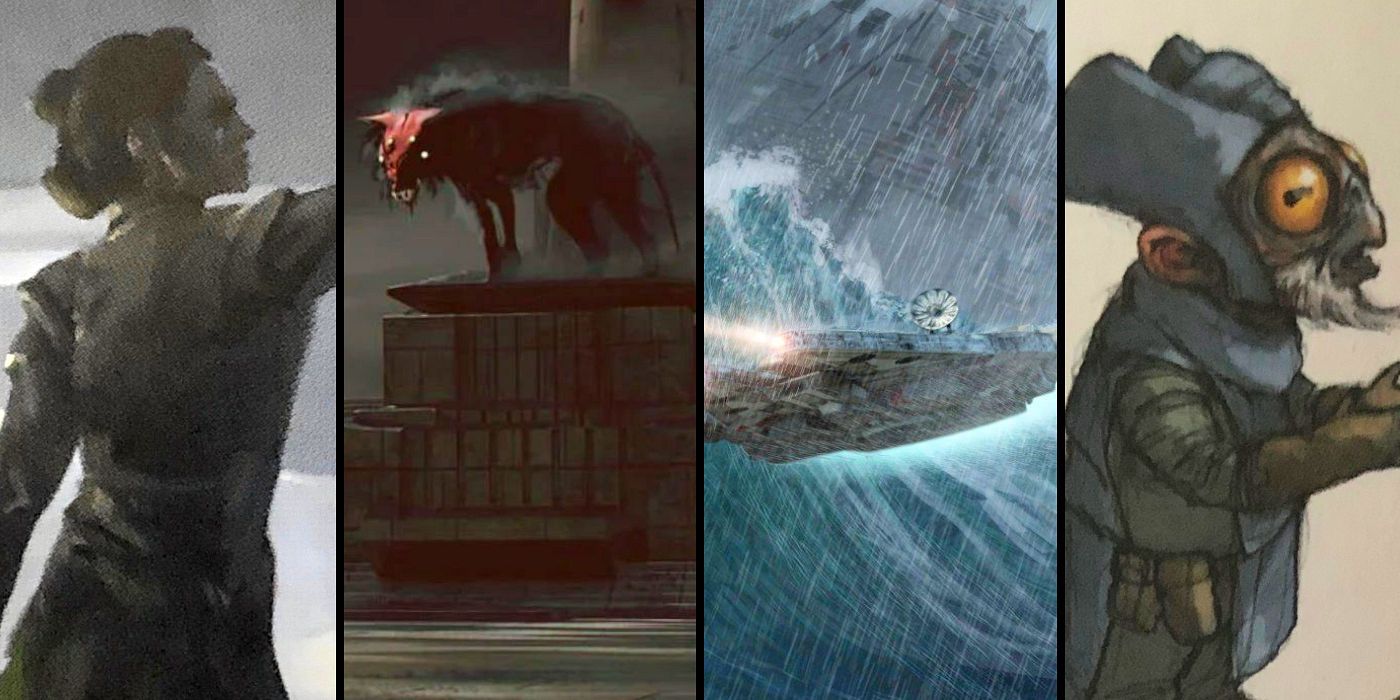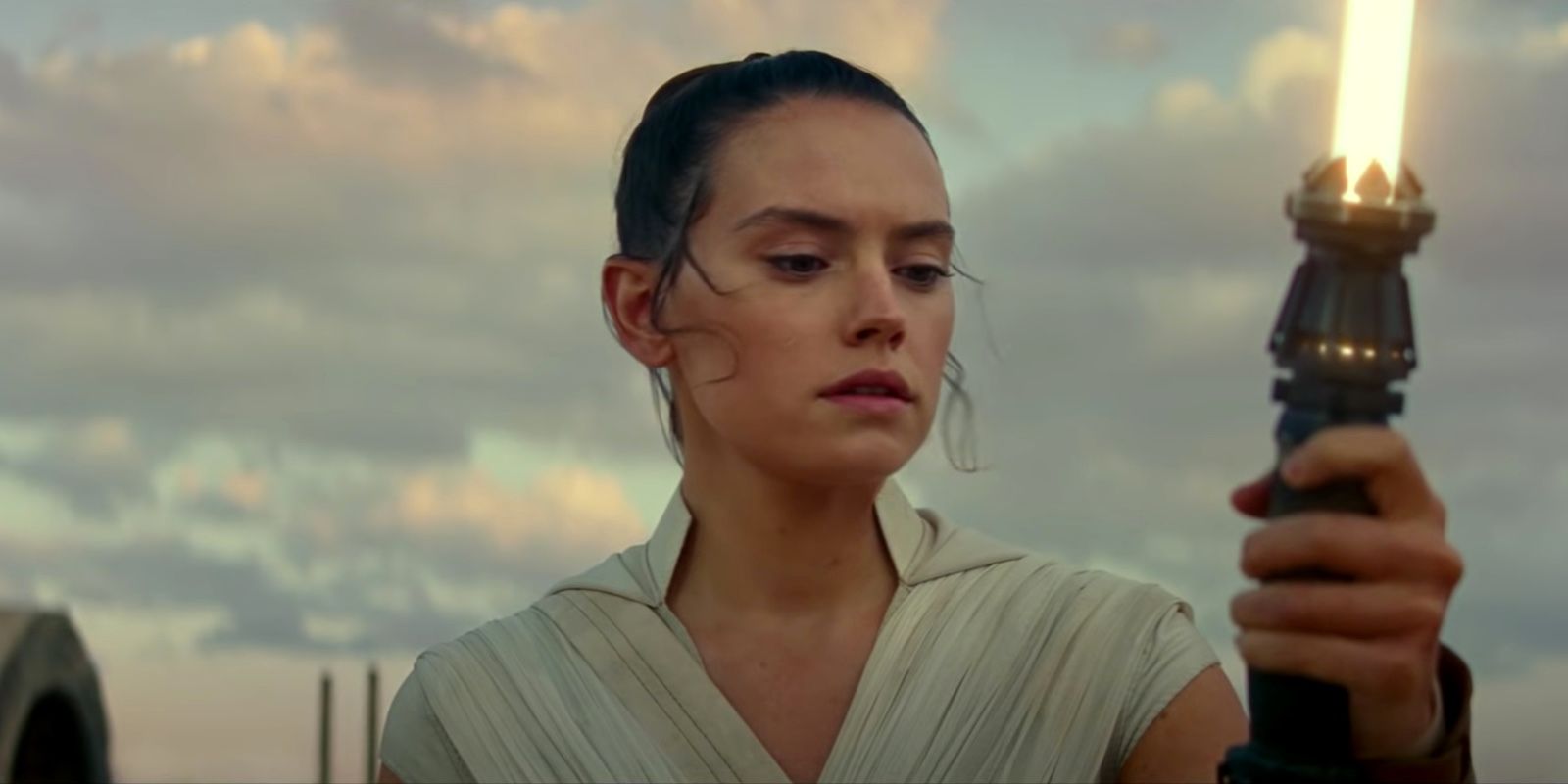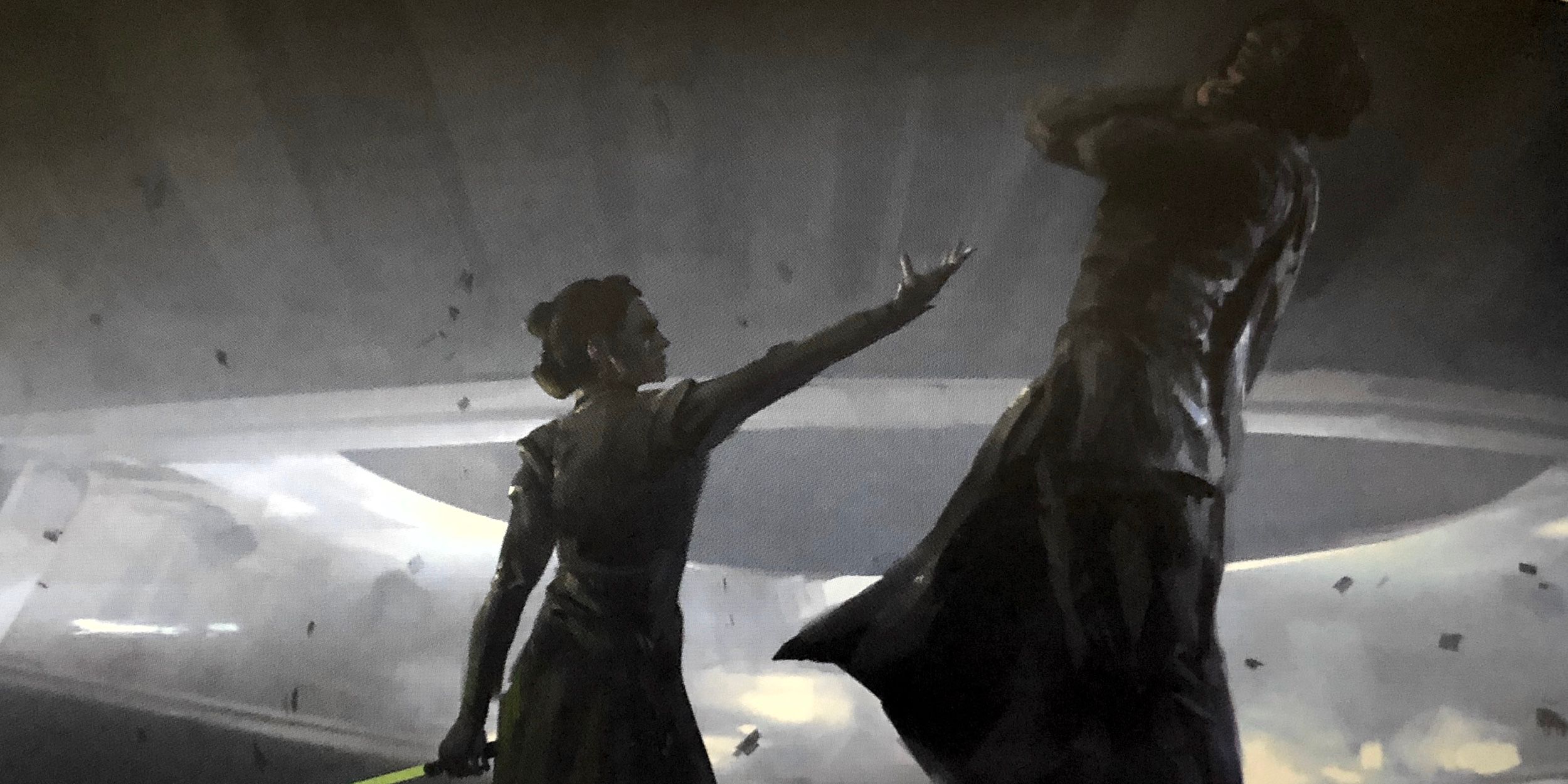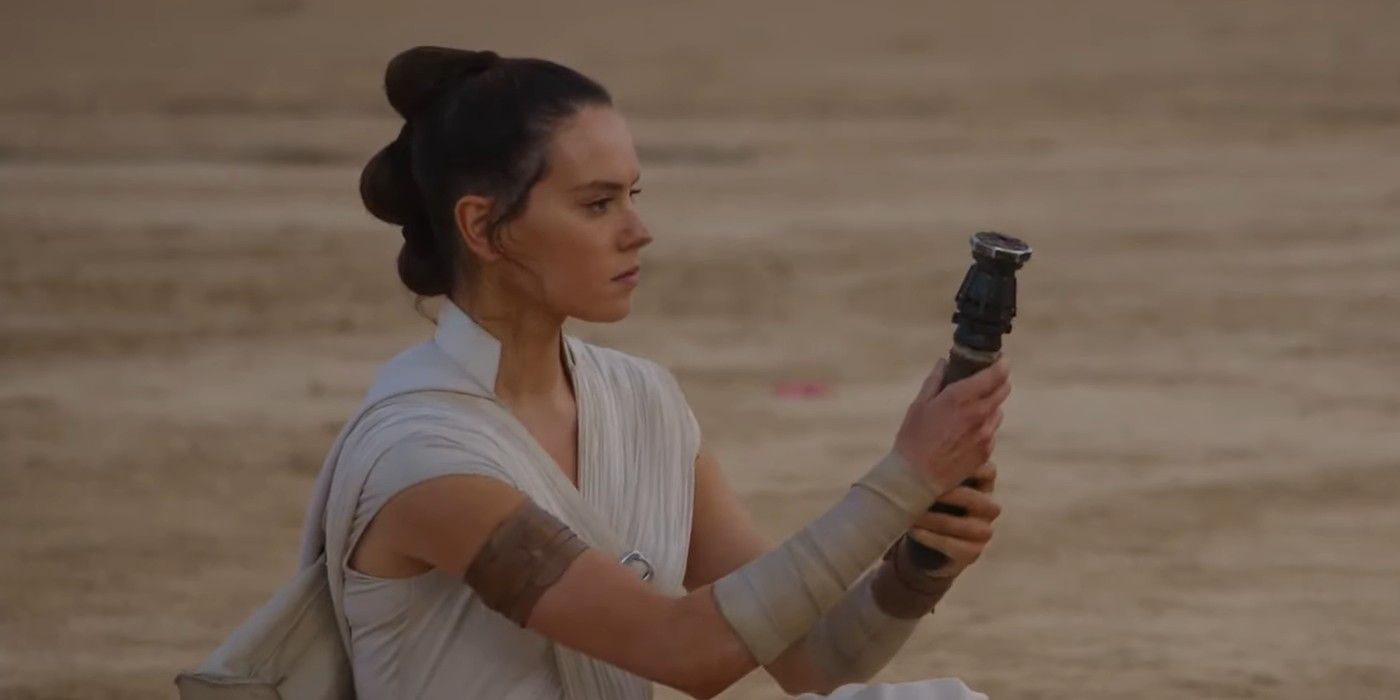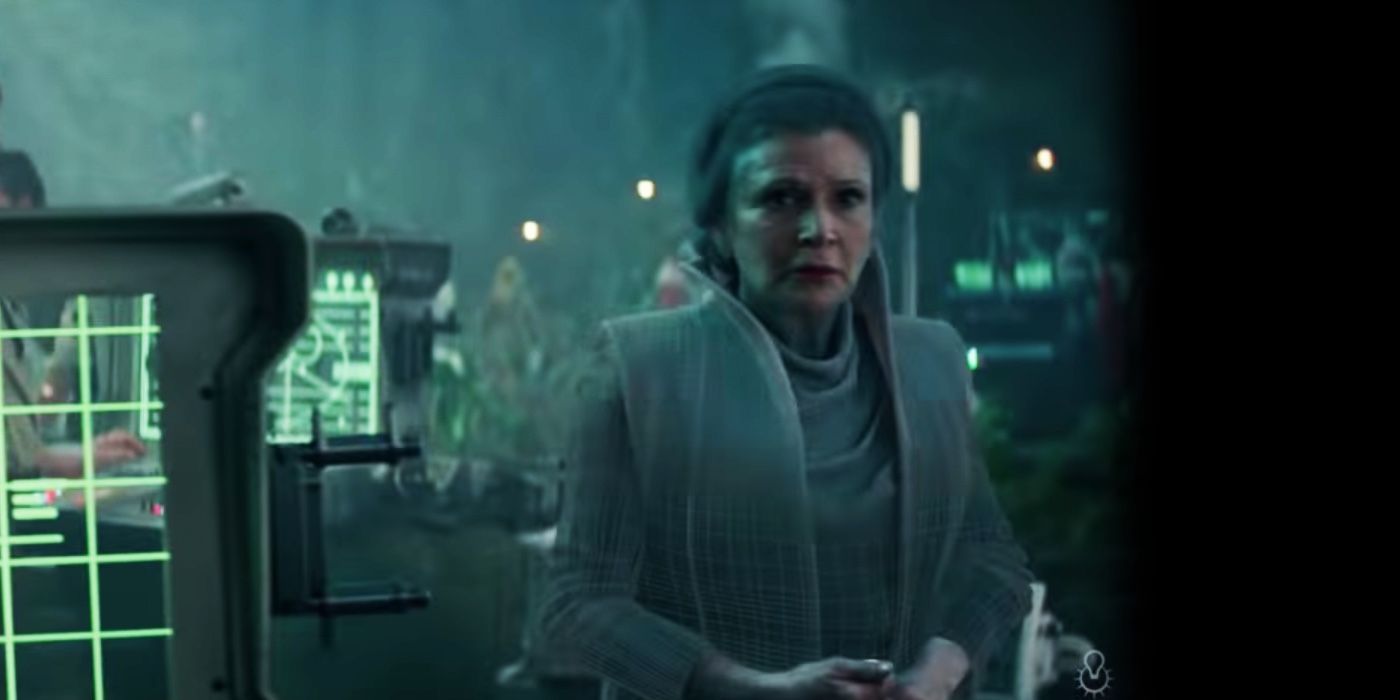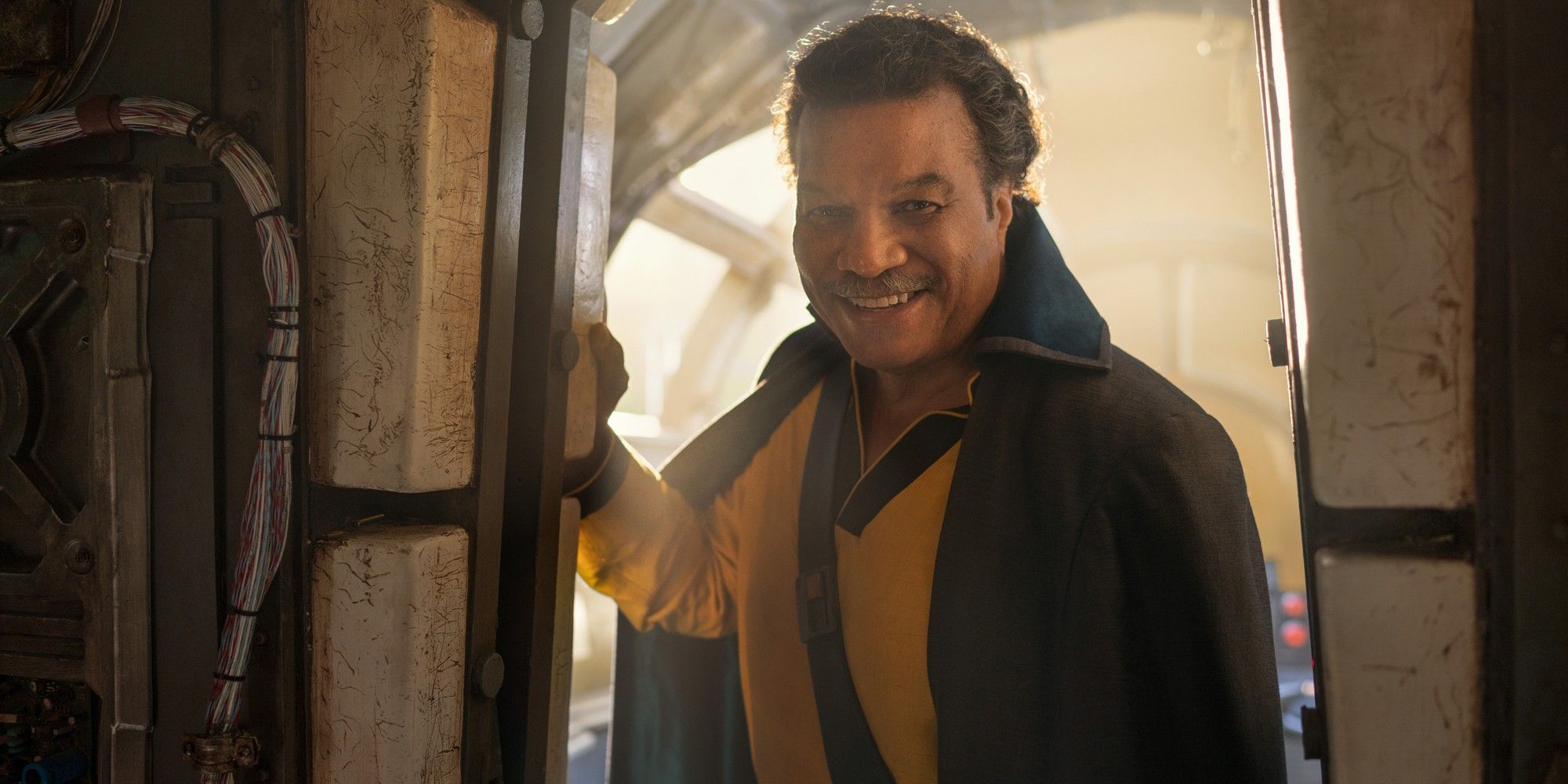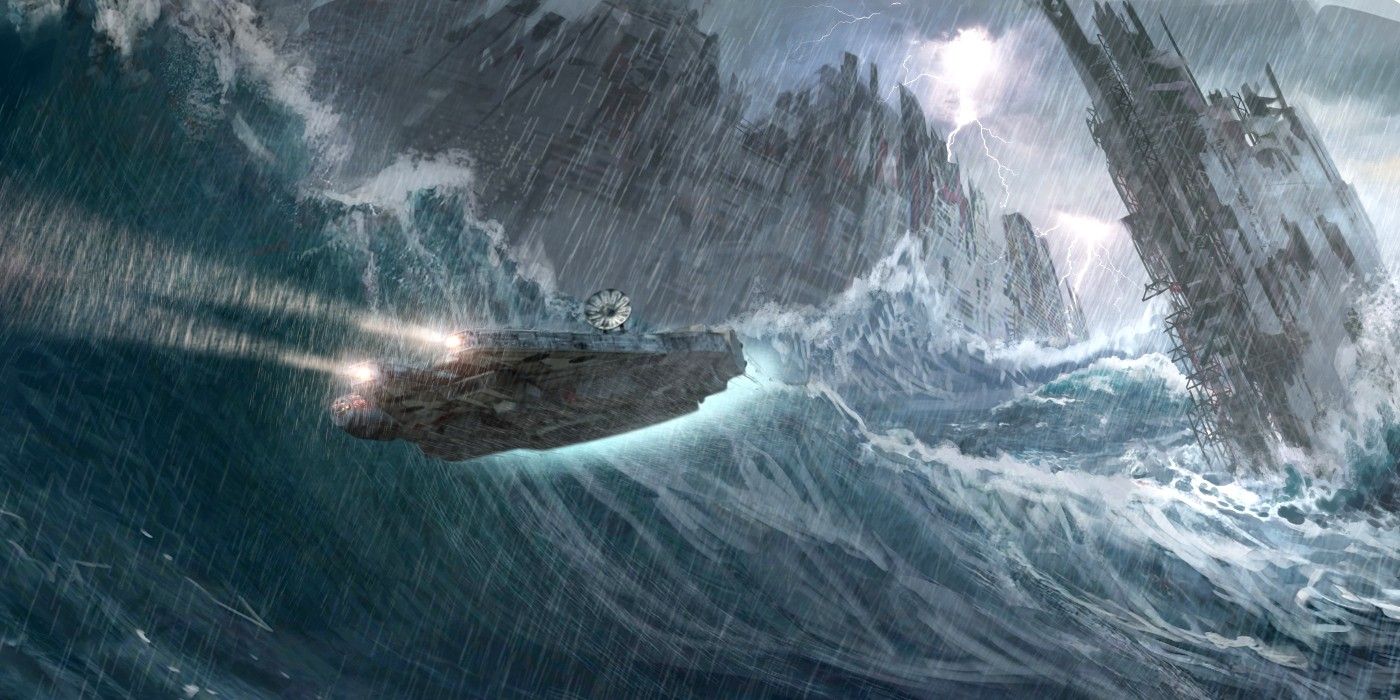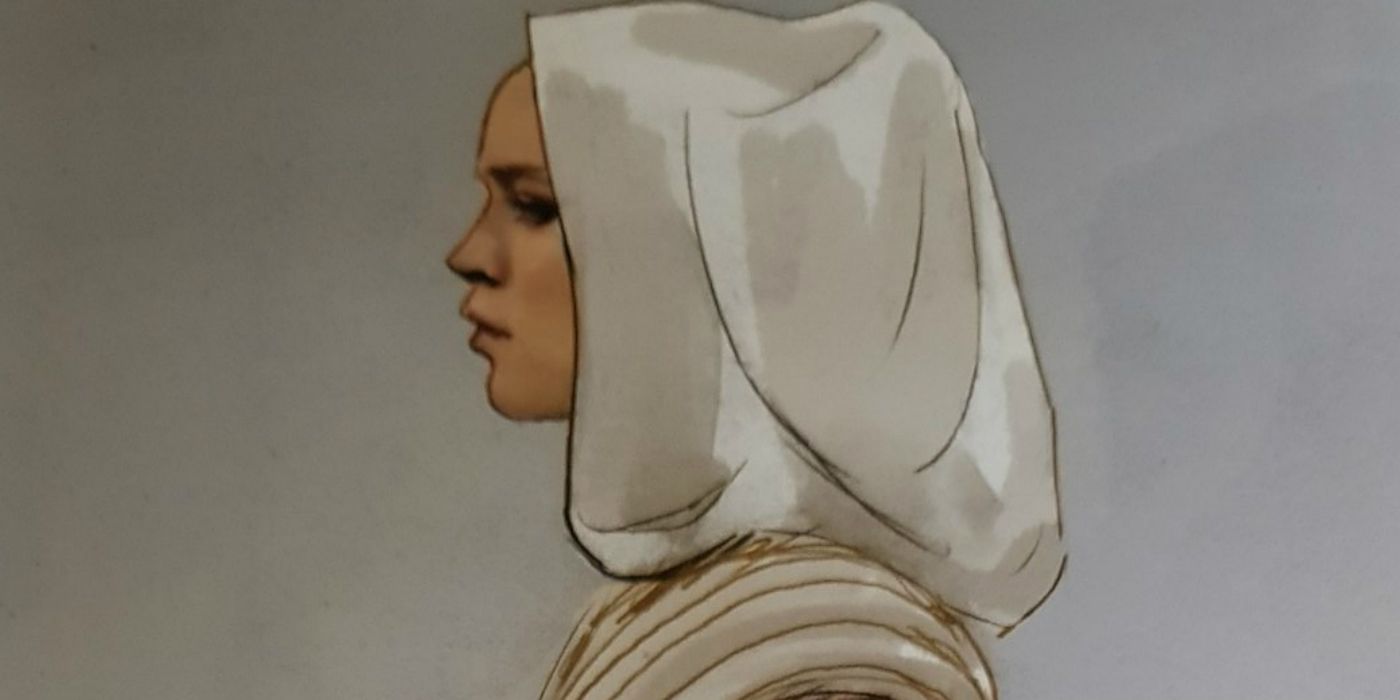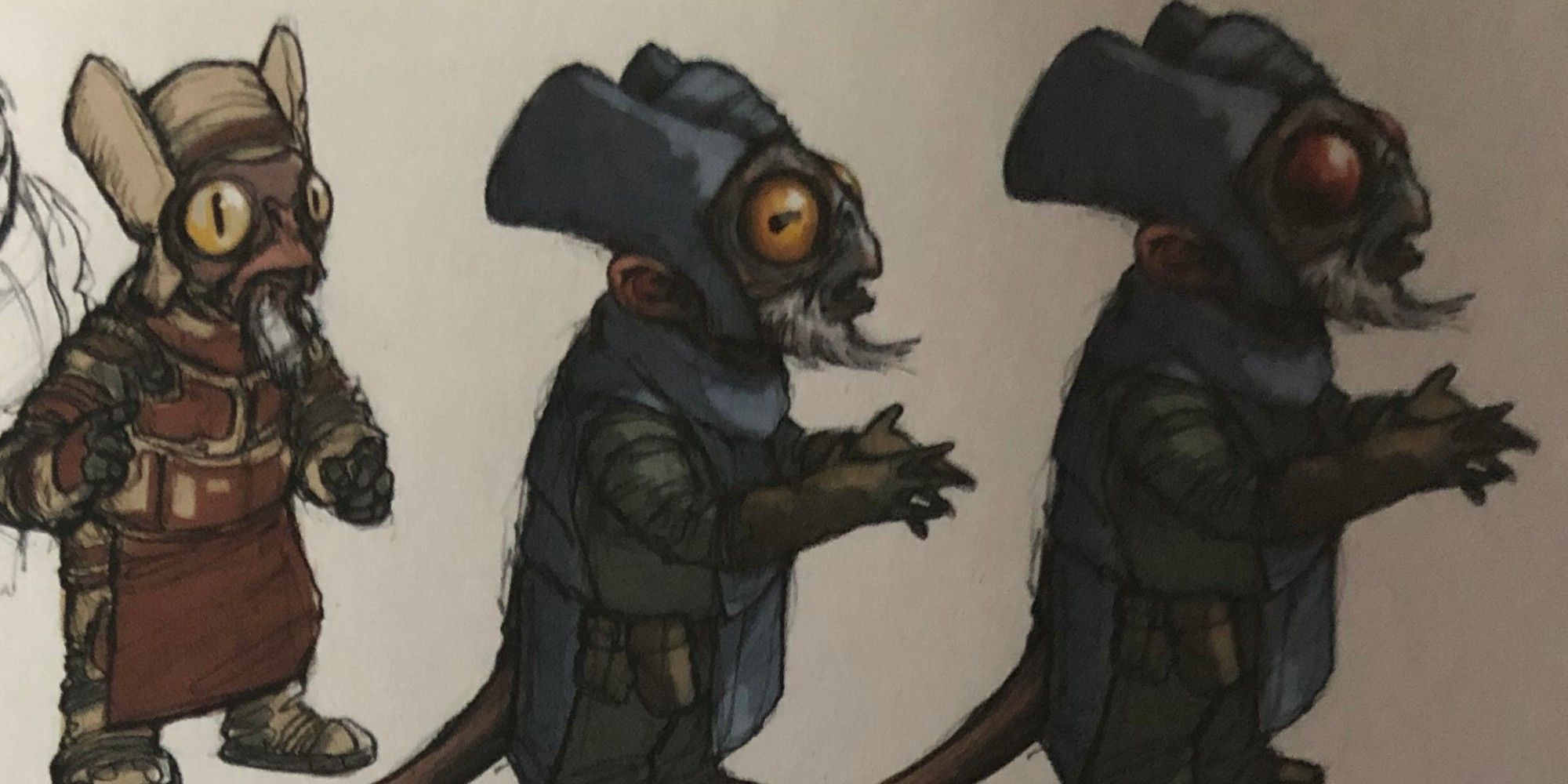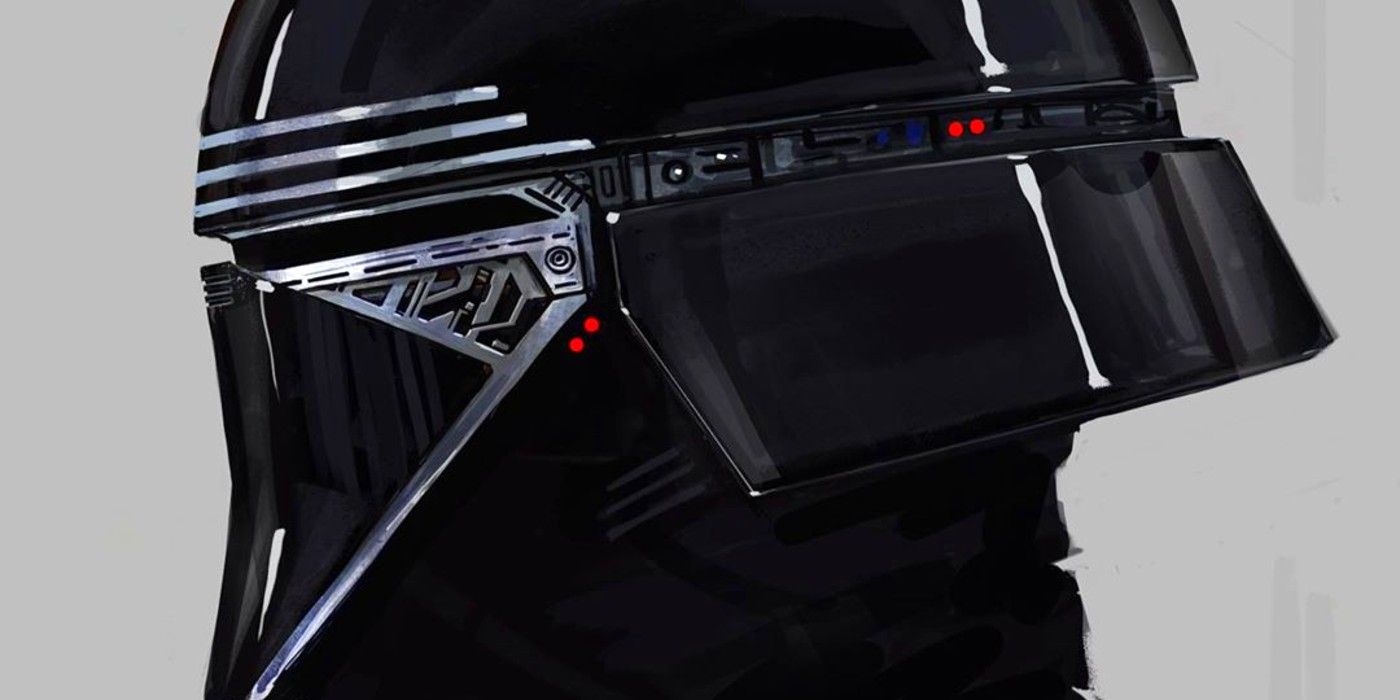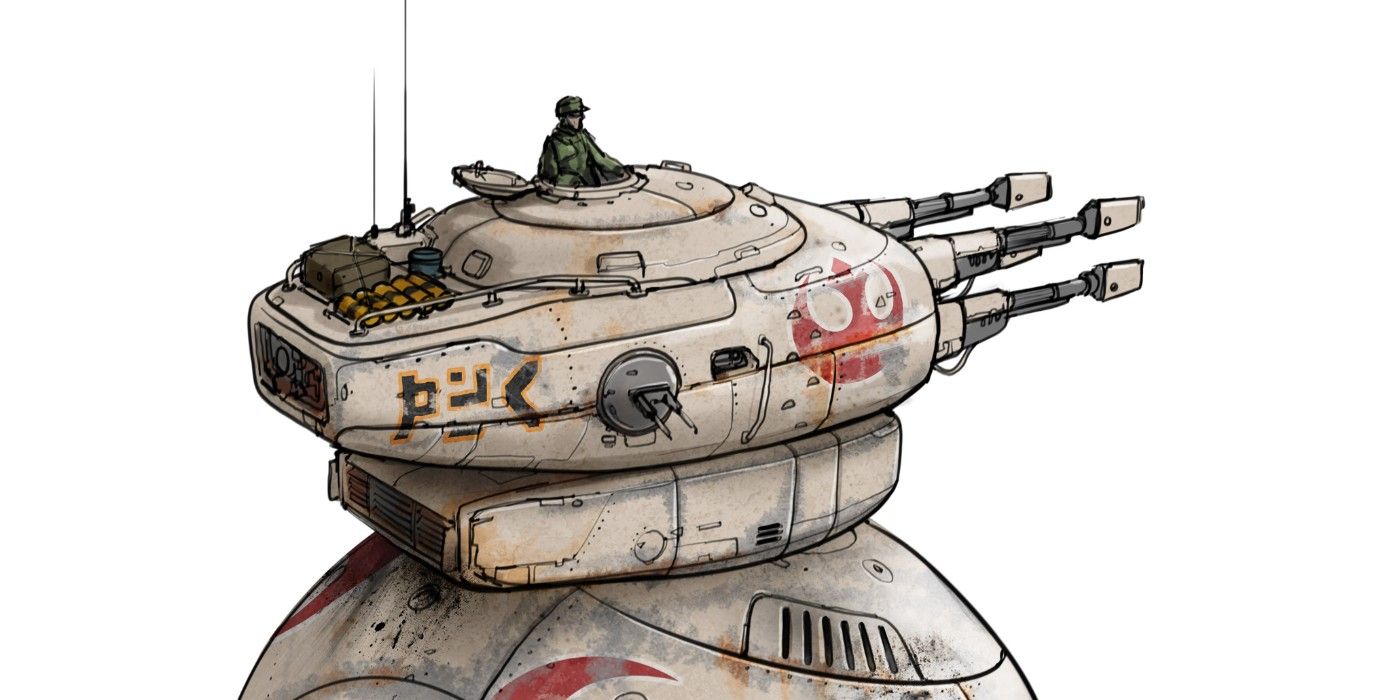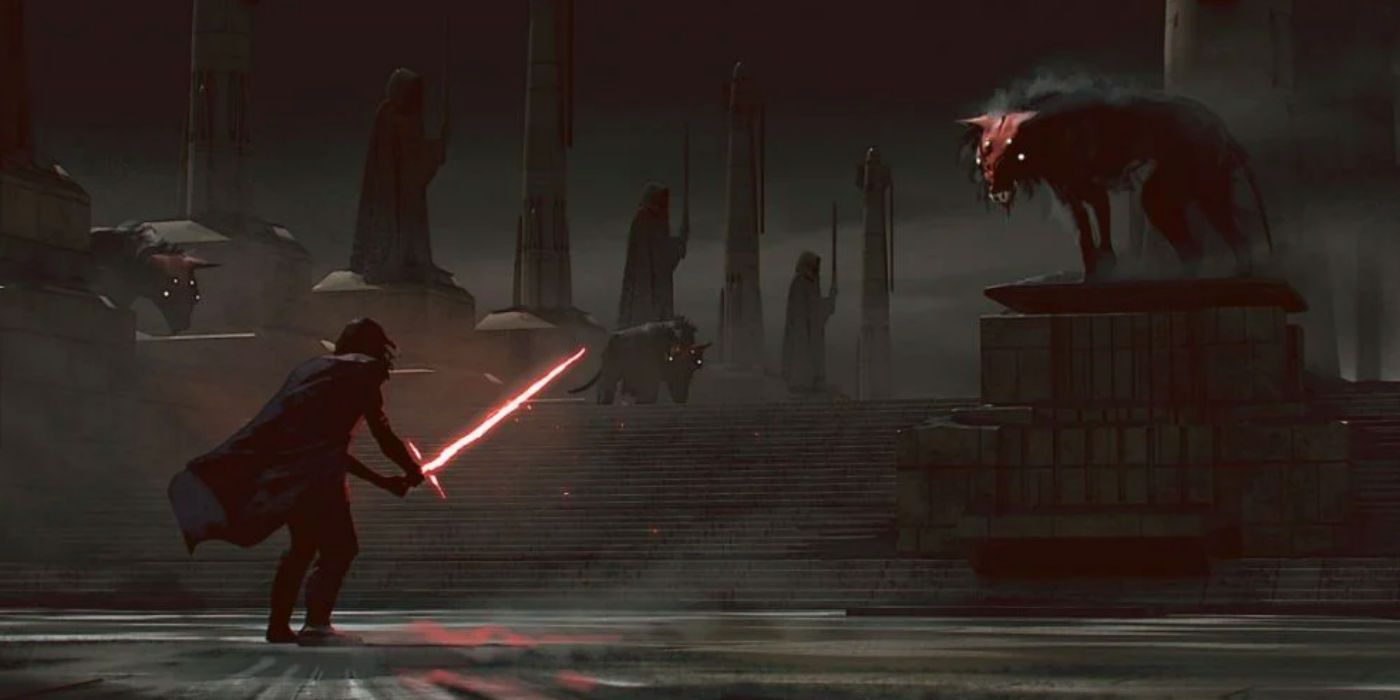Here are all the biggest reveals from The Art of Star Wars: The Rise of Skywalker. Lucasfilm has tended to publish an official "Art of" book alongside the theatrical release of every Star Wars film, and they've frequently had to make difficult choices when it comes to the content. In the case of Star Wars: The Last Jedi, for example, selected concept art featuring Master Yoda went unpublished, because they feared it would leak and spoil the film. With Star Wars: The Rise of Skywalker, they took a different approach, instead delaying the art book's publication.
In spite of this, The Art of Star Wars: The Rise of Skywalker contains surprisingly few spoilers. Most striking of all, Palpatine isn't even mentioned, with the book acting as though his very presence in the movie was a spoiler that should be avoided at all costs - even though the very first trailer ended with his sinister laugh. Meanwhile, the book feels carefully structured so as to make it as difficult as possible to track the film's development, which may reflect the difficulty Lucasfilm experienced putting it together. "I've never rewritten a film as much as this one," co-writer Chris Terrio admits at one point. "It's like the tide. There's a new script every morning... We're course-correcting as we go."
That naturally makes the concept art all the more enthralling; every piece of previously-unseen art feels like a window into the story as it might have been. At the same time, though, it's important to remember that not all concept art is actually incorporated into a script. Artists are usually given a lot of flexibility in the early stages of the development process, and they then pass their sketches and painting on to the scriptwriters, who draw inspiration from the designs they like. No doubt fans will spend hours poring over every detail in The Art of Star Wars: The Rise of Skywalker, attempting to figure out the evolution of the troubled end of the Skywalker saga. Here, though, are all the biggest takeaways.
How Rey Fulfilled The Chosen One Prophecy
According to production designer Rick Carter, Rey is the fulfillment of the Chosen One prophecy. "The Episode I prophecy was that a Skywalker was somehow going to help balance the Force," he explains. "Rian Johnson opened Star Wars up to the possibility that, if Rey is not a Skywalker by blood, then being the mythological Skywalker is something you can aspire to and achieve in your life." In his view, Rey becomes a Skywalker because that is who she chooses to be; the one who stands against the darkness. This dovetails fairly well with the interpretation of novelization author Rey Carson, who suggested Rey demonstrates the ultimate triumph of the Skywalkers. "In the end, it’s a Palpatine who turns to the light," she pointed out, "thus handing the Skywalkers their ultimate victory."
Dark Rey May Have Been A Force To Be Reckoned With
There's quite a lot of concept art related to Dark Rey, enough to suggest Lucasfilm originally intended this to be a major story beat in Star Wars: The Rise of Skywalker. There are several scenes in which Rey is shown standing alongside Kylo Ren in his throne room, and then one in which Rey is atually Force-choking him. According to the book, this drawing was made "prior to any sort of art department overview" of the film's main story, but it certainly suggests concept artists were fascinated by the idea of Dark Rey. Several sketches show her wearing a blood-red gown, or a sweeping black cloak that was "more of a flowing dark entity that was surrounding her."
The Rey Skywalker Twist May Have Been Planned All Along
The Art of Star Wars: The Rise of Skywalker details a meeting of the Lucasfilm Story Group in 2014, roughly a year and a half before the theatrical release of Star Wars: The Force Awakens. A quote ascribed to Pablo Hidalgo suggests the "Rey Skywalker" twist had been planned all along. "I like the idea that she's going to be our Skywalker, but she's not a Skywalker," he observed. "Then, for our purposes, 'the Skywalker' is really a metaphor. It doesn't have to be something that's directly connected to blood."
This particular quote should probably be treated with a degree of caution. Lucasfilm appear extremely conscious of the criticism they hadn't planned out the sequel trilogy well enough; as a result they've consistently attempted to pretend major twists had been anticipated years in advance. The classic example is the resurrection of Palpatine, which Lucasfilm president Kathleen Kennedy said had "been in the blueprint for a long time." It's now clear this was only thought of by J.J. Abrams, and there's some speculation it may even have been a late addition.
Leia's Role May Have Fitted With The Original Plan
Production of the Star Wars sequel trilogy was sadly disrupted by the tragic death of Carrie Fisher, who was supposed to be central to Star Wars: Episode IX. The transcript from 2014 suggests the Story Group felt the sequel trilogy should fulfill The Empire Strikes Back's setup, in which Yoda stressed "there is another." As Dave Filoni explained it:
"We should shift it so Leia is the Obi-Wan of this entire trilogy. I don't even think that it hurts that she's not primarily that mentor figure in VII because, like John [Knoll] had been saying, the audience expectation is so on Luke. And when that proves not to be true, it's way more powerful. It's dangerous, because it makes it so about the women of Star Wars. Something to me says that's right."
The Story Group believed Leia would be the best mentor simply because they considered her the most impressive character in Star Wars. She has endured more than anyone else, and in the sequel trilogy becomes a widow as well, and yet she still keeps going. She can teach Rey not just how to be a Jedi, but how to live.
Lando Does Indeed Have A Daughter
Screenwriter Chris Terrio confirms Lando does indeed have a daughter. "The first people that the First Order targeted were leaders of the old Rebellion," he notes. "They went for their kids. They went for Lando's daughter. They went for Ben Solo, which begins to make more sense when you look at the wider context of their machinations -- the long-term plan." It's generally believed this missing daughter was intended to be Jannah, the former First Order Stormtrooper who joined the Resistance at Kef Bir in Star Wars: The Rise of Skywalker; unfortunately, key scenes were cut, and even the novelization doesn't go far enough to officially confirm this theory.
The Oracle Would Have Tied The Film To Darth Vader
https://imgur.com/a/Qcajrkn
Kylo Ren's quest to Mustafar originally involved a confrontation with the Oracle, a creature appointed by Darth Vader to protect his Wayfinder. This was cut during editing, but the concept art presents a fascinating glimpse of how much effort went into designing the Oracle. It's actually canon now anyway, because Rae Carson's novelization of Star Wars: The Rise of Skywalker included the cut scene.
Kylo Ren finds the Oracle - and the Sith Wayfinder - in Corvax Fen. According to co-production designer Kevin Jenkins, this grove was envisioned as having only recently been planted. "We're trying to make peace with why there's water on Mustafar, so we're going to make it a boiling lake," he observes. "And when we're in the forest, there's ash, burning trees, and things like that. Also, there are 'colonial settlers' there now. People have taken Mustafar back. That's why the forest that we're doing the fight in only has saplings. They've only been there for twenty or thirty years, rather than the hundreds of years that big trees need to grow."
The Millennium Falcon May Have Explored The Death Star
One of the most fascinating pieces of concept art shows the Millennium Falcon exploring the wreckage of the Death Star on Kef Bir. The Death Star scenes were inspired by concept art produced for Star Wars: The Force Awakens, when Doug Chiang painted out ideas of what could have happened to the wreckage. Co-production designer Kevin Jenkins admits he was concerned at revisiting the Death Star. "I personally was very worried about going back there," he observes on page 218. "I was thinking, 'Oh God, not another Death Star.'" In the end, Lucasfilm switched things up by attempting to give the place something of a haunted house feel.
Lucasfilm appear to have swiftly settled on the idea of Rey traveling out to the Death Star on her own in a skiff, although they went through several different designs in order to enhance the physicality of sailing the skiff. As such, it's unclear where the Falcon came in; perhaps Poe and Finn repaired her and attempted to fly out to the wreckage in order to give Rey back-up. Alternatively, this may have just been a cool painting that never made its way into a script.
Rey's Costume Incorporated A Nod Of Respect To Leia
Rey's costume design incorporates a respectful nod towards Leia, in that she is dressed in white with an Alderaanian-style hood. This stresses the closeness of the Master-Apprentice bond between Leia and Rey, reinforcing the sense Rey has learned a lot more from Leia than she ever did from Luke. Leia, for her part, is described as sensing Rey's destiny was bound to her son's. As such, she knew the best way she could influence Ben Solo was to ensure Rey was strong in the light side of the Force.
Babu Frik Was Originally Key To The Film's MacGuffin - But It Wasn't A Sith Wayfinder
Lucasfilm went through countless different designs for Babu Frik - at one point he was an insectoid being - but he was originally a lot more important to the plot. The original MacGuffin wasn't a Sith Wayfinder at all, but rather was a kill-switch that would deactivate all Imperial and First Order technology. It had apparently been constructed over many generations by a never-before-seen alien race who were implacably opposed to the Empire - and Babu Frik appears to have been one of them. Like the Wookiees, these aliens were presumably slaves who had been conscripted to serve first the Empire, and then the First Order, in this case using their technical skills to help with Star Destroyer maintenance.
Kylo Ren's Helmet Could Have Looked A Lot More Like Darth Vader's
Star Wars: The Rise of Skywalker saw Kylo Ren repair his mask, apparently a symbol of his supposed mastery of the Knights of Ren. Concept artists went through many different versions of the repaired helmet, with several designs looking strikingly similar to Darth Vader's. Chief costume concept artist Glyn Dillon had recently traveled to Paris, where he saw some Japanese kintsugi (the art of mending broken pottery with metallic lacquer seams), and that informed the final look.
BB-8 Could Have Been Scaled Up As A Tank
One of the strangest pieces of concept art, which didn't get past design stage, imagines BB-8 scaled up as a tank. It's an interesting idea, markedly different to the traditional Imperial Walkers, and the roller-ball means there are none of the traditional weaknesses of an AT-AT. At the same time, though, it's probably not terribly practical on most terrains. In any case, the Resistance was supposed to be more of a ragtag unit struggling to get by, meaning they really shouldn't have access to new tanks.
Kylo Ren Confronted Space Wolves On A Deserted Coruscant
An early draft of Terrio and Abrams' script saw Kylo Ren head to Coruscant, the former galactic capital, and confront monstrous space wolves. They imagined Coruscant as deserted after the fall of the Empire, although The Art of Star Wars: The Rise of Skywalker is silent as to why. The city-planet is now only inhabited by a race of ferocious space wolves, and Kylo Ren was forced to slice his way through a pack of them. This feels like the spiritual ancestor of Kylo Ren's Mustafar battle in the final theatrical cut, with the First Order's Supreme Leader proving himself a lethal force in battle. He would then proceed to the lower levels of the abandoned Jedi Temple.

